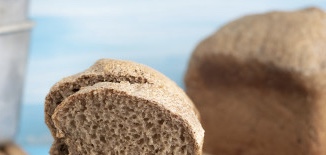



After making jellied bread with wheat flour, I suggest trying another version of similar baking. Today we are preparing gray jellied bread with the addition of rye flour and rye malt. This bread is ideal in all respects - a safe method, quick and easy kneading, no molding. The aroma, taste and texture of the finished baked goods will captivate you, I promise!
I use the highest grade wheat flour for jellied bread, although you can safely experiment with lower grades, as well as a whole grain product. We take a little warm water (ordinary drinking), and the yeast is fast-acting. For lack of rye malt, skip this ingredient, but it adds flavor to the finished baked goods.

After making jellied bread with wheat flour, I suggest trying another version of similar baking. Today we are preparing gray jellied bread with the addition of rye flour and rye malt. This bread is ideal in all respects - a safe method, quick and easy kneading, no molding. The aroma, taste and texture of the finished baked goods will captivate you, I promise!
I use the highest grade wheat flour for jellied bread, although you can safely experiment with lower grades, as well as a whole grain product. We take a little warm water (ordinary drinking), and the yeast is fast-acting. For lack of rye malt, skip this ingredient, but it adds flavor to the finished baked goods.
Sign up to receive email updates on new recipes.